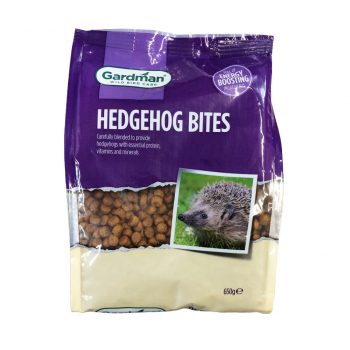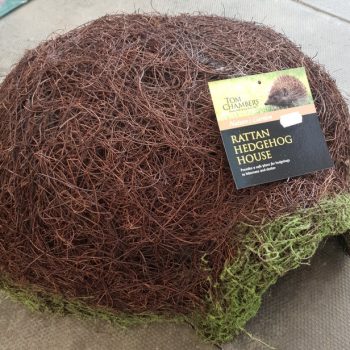The UK’s hedgehog population has sadly declined by 66% in the last 20 years, leaving the population of the insect-eating hogs vulnerable. Besides being adorable, hedgehogs (like all wildlife) are an important part of our country’s ecosystem and can be a friend of any garden owner due to their diet of slugs, snails and insects.
Unfortunately, the development and expansion of urban areas and infrastructure can impact the hedgehog population in some areas as their sight is poor and their tendency to venture out at night leaves them at risk of being run over. In the summer months the injuries they sustain can also lead to flystrike, a deadly infestation of maggots that can quickly kill a hedgehog – particularly any young hoglets that may find themselves alone and without their mother if she has been hurt or killed.
You may be wondering how to tell if hedgehogs are in your garden – here are the three telltale signs:
- Droppings – dark, gritty and up to 5cm long. Often they will be visibly full of things like insect wingcases that can’t be digested.
- Tracks – trails through flowerbeds, long grass or dew-covered lawns first thing in the morning could mean a hedgehog passed through recently.
- Prints – hedgehog front paws are wide with splayed toes whilst their back paws are narrow with long toes. This makes their tracks hard to spot but they may be visible on dry paths and patios.
We’ve compiled some easy tips to help you care for hedgehogs and make your garden hedgehog friendly:
- The following tips will help you to create a never-ending food source for hungry hedgehogs but an immediate way to help is by putting out water and hedgehog specific food at night. The most crucial time for this is between November and March (normally hibernation season) when insects are hard to find. For tighter budgets, a meat-based cat or dog food or meat flavoured cat biscuits will do.
- Be careful when using netting or having football nets in your garden – the RSPCA have found that hedgehogs can get stuck and suffocate or sustain serious injury.
- Minimise harmful chemicals – weedkiller reduces numbers of earthworms which limits the food available to hedgehogs. Slug pellets and other pesticides can also make hedgehogs extremely unwell, sometimes proving fatal.
- Provide nesting spots – we have readymade hog houses ready to purchase in-store but a woodpile or overgrown corner can also be a cosy home to a hedgehog. Having one corner where the grass is long and native plants such as wildflowers or meadow foxtails grow will create a daytime nesting area for hedgehogs whilst also encouraging lots of invertebrates to breed there. A banquet for the hogs!
- Create a compost heap – not only will this save you money on fertilisers, it doubles up as a breeding ground for the insects that hedgehogs thrive on. Keep your heap accessible to hedgehogs rather than in covered containers or bins.
- Create hog holes! Hedgehogs, as the name suggests, are ground-dwelling creatures so creating some holes in fences and hedges at approximately 13cm by 13cm will help. This stops pets from escaping but lets the hedgehogs get from garden to garden and back to their nests with their young. If this won’t work, digging some small tunnels under fences should do the trick.
We’ve got a whole section of our garden centre dedicated to bird and wildlife care, including treats for hedgehogs such as the rattan hedgehog houses pictured above. Call into Avant Home and Garden Centre on Wigan Road, Leyland, or visit our online shop (please note stock will vary between the two).
Categories
- Diane's Blog (29)
- Events (4)
- Gardening To Do Lists (12)
- News (259)
- Past Events (30)
- Uncategorised (20)
Recent Posts
- Gardening Club at Avant – 13 March 10.30am 7th March 2024
- Compost Prices for the 2024 Season 7th March 2024
- Avant’s Christmas Menu 2023 16th December 2023
- New Cafe Opening Hours 8th May 2023
- Compost Prices 2023 22nd April 2023
- Christmas Opening Hours 2022 10th December 2022
- Platinum Jubilee Opening Hours at Avant 27th May 2022
- Easter 2022 Opening Hours 14th April 2022


